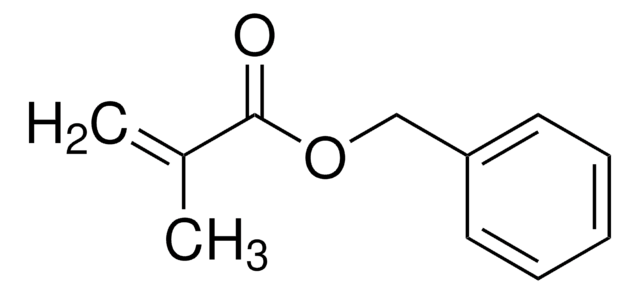If this product has an expiration or retest date, it will be shown on the Certificate of Analysis (COA, CofA). If there is no retest or expiration date listed on the product's COA, we do not have suitable stability data to determine a shelf life. For these products, the only date on the COA will be the release date; a retest, expiration, or use-by-date will not be displayed.
For all products, we recommend handling per defined conditions as printed in our product literature and website product descriptions. We recommend that products should be routinely inspected by customers to ensure they perform as expected.
For products without retest or expiration dates, our standard warranty of 1 year from the date of shipment is applicable.
For more information, please refer to the Product Dating Information document: https://www.sigmaaldrich.com/deepweb/assets/sigmaaldrich/marketing/global/documents/449/386/product-dating-information-mk.pdf
441090
2,2′-azobis(2-metilpropionitrile)
98%
Sinonimo/i:
α,α′-azoisobutirronitrile, AIBN, Azobisisobutirronitrile, Iniziatore di radicali liberi
Scegli un formato
59,40 €
Scegli un formato
About This Item
59,40 €
Prodotti consigliati
Livello qualitativo
Saggio
98%
Stato
powder
Punto di fusione
102-104 °C (dec.) (lit.)
Temperatura di conservazione
2-8°C
Stringa SMILE
CC(C)(\N=N\C(C)(C)C#N)C#N
InChI
1S/C8H12N4/c1-7(2,5-9)11-12-8(3,4)6-10/h1-4H3/b12-11+
OZAIFHULBGXAKX-VAWYXSNFSA-N
Cerchi prodotti simili? Visita Guida al confronto tra prodotti
Categorie correlate
Applicazioni
Stoccaggio e stabilità
Avvertenze
Danger
Indicazioni di pericolo
Consigli di prudenza
Classi di pericolo
Acute Tox. 4 Inhalation - Acute Tox. 4 Oral - Aquatic Chronic 3 - Self-react. C
Rischi supp
Codice della classe di stoccaggio
4.1A - Other explosive hazardous materials
Classe di pericolosità dell'acqua (WGK)
WGK 2
Punto d’infiammabilità (°F)
122.0 °F
Punto d’infiammabilità (°C)
50 °C
Dispositivi di protezione individuale
dust mask type N95 (US), Eyeshields, Faceshields, Gloves, type P3 (EN 143) respirator cartridges
Scegli una delle versioni più recenti:
Possiedi già questo prodotto?
I documenti relativi ai prodotti acquistati recentemente sono disponibili nell’Archivio dei documenti.
I clienti hanno visto anche
Articoli
To keep pace with Moore′s Law, there is a continuing need in the semiconductor industry to achieve higher circuit density in microelectronic devices.
An article regarding common FAQs for initiators and stabilizers.
RAFT polymerization offers living characteristics to radical polymerization, contributing versatility to reversible deactivation radical polymerization methods.
Monomers for ophthalmic use aim for purity, reliability, and comfort, driving innovation for affordable contact lenses.
Protocolli
RAFT polymerization offers precise control, enabling tailored synthesis of complex polymer structures.
We present an article about RAFT, or Reversible Addition/Fragmentation Chain Transfer, which is a form of living radical polymerization.
Polymerization via ATRP procedures demonstrated by Prof. Dave Haddleton's research group at the University of Warwick.
-
How can I determine the shelf life / expiration / retest date of this product?
1 risposta-
Utile?
-
-
How is shipping temperature determined? And how is it related to the product storage temperature?
1 risposta-
Products may be shipped at a different temperature than the recommended long-term storage temperature. If the product quality is sensitive to short-term exposure to conditions other than the recommended long-term storage, it will be shipped on wet or dry-ice. If the product quality is NOT affected by short-term exposure to conditions other than the recommended long-term storage, it will be shipped at ambient temperature. As shipping routes are configured for minimum transit times, shipping at ambient temperature helps control shipping costs for our customers. For more information, please refer to the Storage and Transport Conditions document: https://www.sigmaaldrich.com/deepweb/assets/sigmaaldrich/marketing/global/documents/316/622/storage-transport-conditions-mk.pdf
Utile?
-
-
Wie lange ist der Artikel 441090-25G, 2,2′-Azobis(2-methylpropionitril) nach Herstellung haltbar?
1 risposta-
This product is not assigned an expiration date or recommended retest date. Products with no expiration date or recommended retest date should be routinely inspected by customers to ensure they perform as expected. These products are also subject to a one-year warranty from the date of shipment.
For more information, you may access the "Product Dating Information" document under "ADDITIONAL USEFUL DOCUMENTS ABOUT OUR PRODUCTS" at the bottom of the Quality Services page with this link: https://www.sigmaaldrich.com/life-science/quality-and-regulatory-management/quality-services.
Utile?
-
-
How do you dispose of 2,2′-Azobis(2-methylpropionitrile)?
1 risposta-
Please refer to the SDS for disposal recommendations. Note that methods of disposal are listed in section 6.3. Waste material must be disposed of in accordance with the national and local regulations.
Consult with facility or municipal EHS authorities to assure proper guidelines are followed. See the link below to review the SDS:https://www.sigmaaldrich.com/sds/aldrich/441090
Utile?
-
-
Does Product 441090, 2,2´-Azobis(2-methylpropionitrile) 98% AIBN, contain an inhibitor?
1 risposta-
No, there is no inhibitor added to this product.
Utile?
-
-
At what temperature does Product 441090, 2,2´-Azobis(2-methylpropionitrile)98% AIBN, give off free radicals?
1 risposta-
Free radicals will given off at temperatures above 40oC. Thermal decomposition of the product gives off free radicals which makes this an efficient polymerization initiator.
Utile?
-
-
What is Product 441090, 2,2´-Azobis(2-methylpropionitrile) 98% AIBN soluble in?
1 risposta-
Per the the chemicals encyclopedia published by the Royal Society of Chemistry, 13th Edition, it is soluble in methanol 1.8g / 100ml at 0oC, 4.96g / 100ml at 20oC, and 16.06g / 100ml at 40oC. It is also soluble in ethanol 0.5g / 100ml at 0oC, 2.04g / 100ml at 20oC, and 7.15g / 100ml at 40oC. Please Note: Dissolving this product in acetone results in a violent reaction and may cause an explosion.
Utile?
-
-
What is the Department of Transportation shipping information for this product?
1 risposta-
Transportation information can be found in Section 14 of the product's (M)SDS.To access the shipping information for this material, use the link on the product detail page for the product.
Utile?
-
Filtri attivi
Il team dei nostri ricercatori vanta grande esperienza in tutte le aree della ricerca quali Life Science, scienza dei materiali, sintesi chimica, cromatografia, discipline analitiche, ecc..
Contatta l'Assistenza Tecnica.











